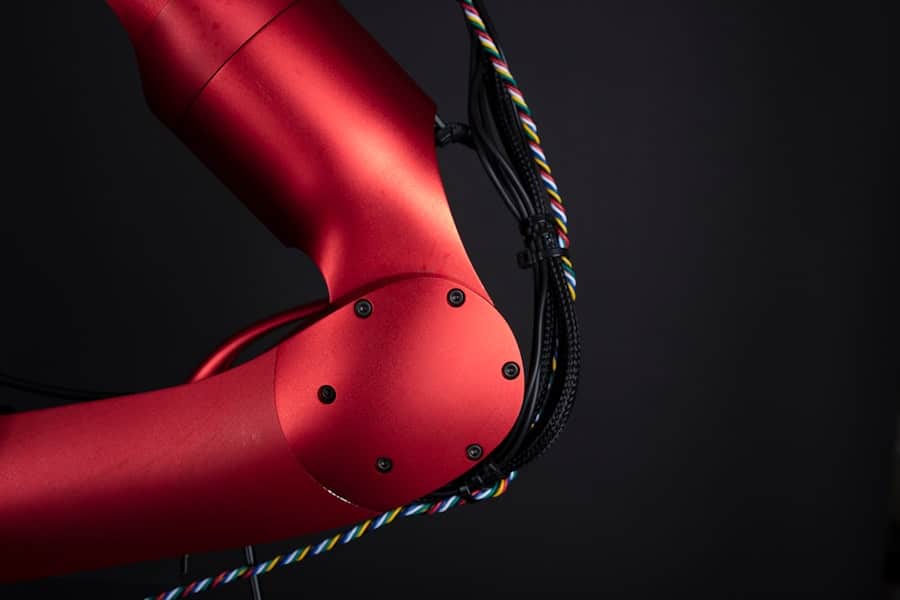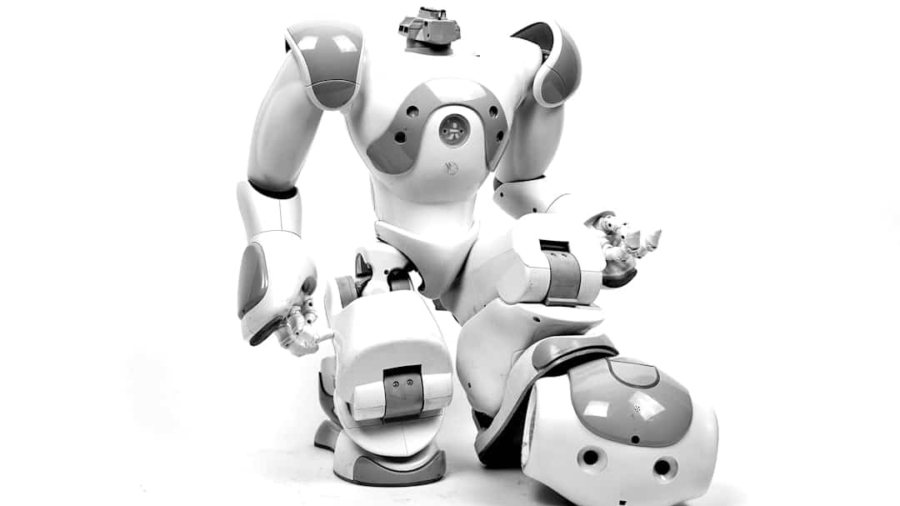Artificial Intelligence (AI) and robotics are two of the most transformative technologies of the 21st century, each influencing the other in profound ways. AI refers to the simulation of human intelligence processes by machines, particularly computer systems, which can include learning, reasoning, and self-correction. Robotics, on the other hand, involves the design, construction, operation, and use of robots—machines capable of carrying out a series of actions automatically.
The intersection of these two fields has led to the creation of intelligent robots that can perform complex tasks, adapt to their environments, and even interact with humans in increasingly sophisticated ways. The integration of AI into robotics has opened up new possibilities for automation and efficiency across various sectors. From manufacturing to healthcare, AI-powered robots are enhancing productivity and enabling new capabilities that were previously unimaginable.
As these technologies continue to evolve, they raise important questions about their implications for society, the economy, and the future of work.
Key Takeaways
- AI and robotics have evolved significantly, leading to the development of human-like robots with advanced capabilities.
- AI plays a crucial role in the development of human-like robotics, enabling them to perform complex tasks and interact with humans in a more natural manner.
- Challenges in developing human-like robotics include the need for advanced AI algorithms, hardware limitations, and ethical considerations.
- Ethical considerations in AI and human-like robotics include issues related to privacy, safety, and the potential impact on the job market.
- Human-like robotics have applications in various industries, including healthcare, manufacturing, and entertainment, and are expected to have a significant impact on the future of work and daily life.
The Evolution of AI in Robotics
The journey of AI in robotics can be traced back to the mid-20th century when early pioneers began exploring the potential of machines to mimic human behavior. Initial efforts focused on rule-based systems that could perform specific tasks but lacked the ability to learn or adapt. As computational power increased and algorithms became more sophisticated, researchers began to develop machine learning techniques that allowed robots to improve their performance over time.
In recent years, advancements in deep learning and neural networks have further propelled the capabilities of AI in robotics. For instance, robots equipped with computer vision can now recognize objects and navigate complex environments with remarkable accuracy.
Companies like Boston Dynamics have showcased robots that can perform intricate movements and tasks, such as opening doors or navigating uneven terrain. These developments illustrate how AI has transformed robotics from static machines into dynamic entities that can learn from their surroundings and interact with humans in meaningful ways.
The Role of AI in Human-Like Robotics Development

Human-like robotics, often referred to as humanoid robots, aim to replicate human appearance and behavior. The role of AI in this domain is pivotal, as it enables these robots to process information and respond to stimuli in ways that mimic human cognition. For example, natural language processing (NLP) allows humanoid robots to understand and generate human language, facilitating more natural interactions with people.
This capability is essential for applications ranging from customer service robots to companions for the elderly. Moreover, AI enhances the emotional intelligence of humanoid robots. By analyzing facial expressions and vocal tones, these robots can gauge human emotions and respond appropriately.
This aspect is particularly important in fields such as healthcare, where robots can provide support and companionship to patients. The development of social robots like SoftBank’s Pepper demonstrates how AI can be harnessed to create machines that not only perform tasks but also engage with humans on an emotional level, fostering connections that were once thought to be exclusive to living beings.
Challenges and Limitations in Developing Human-Like Robotics
Despite significant advancements, the development of human-like robotics is fraught with challenges and limitations. One major hurdle is achieving true dexterity and mobility akin to that of humans. While robots can perform specific tasks with precision, replicating the fluidity and adaptability of human movement remains a complex problem.
For instance, tasks that require fine motor skills, such as threading a needle or playing a musical instrument, are still beyond the capabilities of most humanoid robots. Another challenge lies in the realm of perception and understanding. While AI has made strides in processing visual and auditory information, creating robots that can fully comprehend context and nuance is still a work in progress.
For example, a humanoid robot may struggle to interpret sarcasm or cultural references during a conversation, leading to misunderstandings with human users. These limitations highlight the need for ongoing research and development to create more sophisticated AI systems that can enhance the capabilities of human-like robots.
Ethical Considerations in AI and Human-Like Robotics
The rise of AI and human-like robotics brings forth a myriad of ethical considerations that society must address. One pressing concern is the potential for job displacement as robots become capable of performing tasks traditionally carried out by humans. Industries such as manufacturing, retail, and even healthcare are increasingly adopting robotic solutions, raising questions about the future of employment and economic inequality.
Policymakers must grapple with how to balance technological advancement with the need for job security for workers. Additionally, there are ethical implications surrounding the treatment of humanoid robots themselves. As these machines become more lifelike and capable of emotional interaction, society may face dilemmas regarding their rights and status.
For instance, if a humanoid robot develops a personality or exhibits signs of distress, should it be treated with compassion? This question challenges our understanding of consciousness and personhood, prompting discussions about how we define what it means to be “alive” or deserving of ethical consideration.
Applications of Human-Like Robotics in Various Industries

Healthcare Applications
In healthcare, humanoid robots are being utilized as companions for patients suffering from loneliness or cognitive decline. Robots like Paro, a therapeutic robotic seal, have been shown to improve emotional well-being among elderly patients by providing comfort and companionship.
Enhancing Quality of Life
These applications highlight how human-like robots can enhance quality of life for vulnerable populations.
Educational Innovations
In education, humanoid robots are being employed as teaching assistants that engage students in interactive learning experiences. Robots like NAO are used in classrooms to teach programming concepts or assist children with special needs by providing personalized support. This innovative use of technology not only enhances educational outcomes but also prepares students for a future where collaboration with intelligent machines will be commonplace.
The Future of AI and Human-Like Robotics
Looking ahead, the future of AI and human-like robotics is poised for remarkable advancements that could redefine our relationship with technology. As AI algorithms continue to improve through techniques such as reinforcement learning and transfer learning, we can expect humanoid robots to become increasingly autonomous and capable of complex decision-making. This evolution will likely lead to more widespread adoption across various sectors, including hospitality, where robots could serve as concierges or personal assistants.
Moreover, advancements in materials science may enable the creation of more lifelike humanoid robots with skin-like textures and realistic movements. Such developments could enhance their acceptance in social settings, making interactions feel more natural for humans. As these technologies progress, it will be essential for society to engage in ongoing discussions about their implications—ensuring that ethical considerations remain at the forefront as we navigate this rapidly changing landscape.
The Impact of AI on the Development of Human-Like Robotics
The impact of AI on the development of human-like robotics is profound and multifaceted. As these technologies continue to evolve, they hold the potential to transform industries, enhance human experiences, and challenge our understanding of ethics and personhood. The journey from rudimentary machines to sophisticated humanoid robots illustrates not only technological progress but also our aspirations as a society to create tools that augment our capabilities while fostering meaningful connections.
As we stand on the brink of a new era defined by intelligent machines, it is imperative that we approach these advancements with both optimism and caution. By addressing the challenges and ethical considerations associated with AI and human-like robotics, we can harness their potential for good while ensuring that they serve humanity’s best interests in the years to come.
A related article discussing the top trends on LinkedIn for 2023 can provide valuable insights into the current landscape of AI and robotics development. By understanding the latest trends in the industry, researchers and developers can stay ahead of the curve and incorporate cutting-edge technologies into their work. To learn more about the top trends on LinkedIn for 2023, check out the article here.
FAQs
What is the role of AI in developing human-like robotics?
AI plays a crucial role in developing human-like robotics by enabling machines to perceive, learn, and make decisions similar to humans. It allows robots to understand and respond to their environment, interact with humans, and perform complex tasks.
How does AI contribute to the development of human-like robotics?
AI contributes to the development of human-like robotics by providing the ability to process and analyze large amounts of data, recognize patterns, and make decisions based on the information received. This enables robots to mimic human cognitive abilities and behavior.
What are the benefits of using AI in developing human-like robotics?
Using AI in developing human-like robotics offers numerous benefits, including improved efficiency and accuracy in performing tasks, enhanced adaptability to different environments, and the potential to assist humans in various industries such as healthcare, manufacturing, and customer service.
What are the challenges in developing human-like robotics using AI?
Challenges in developing human-like robotics using AI include ensuring ethical and responsible use of the technology, addressing safety and security concerns, and overcoming technical limitations in achieving truly human-like capabilities in robots.
How is AI technology advancing the field of human-like robotics?
AI technology is advancing the field of human-like robotics by enabling the development of more sophisticated and intelligent robots that can understand natural language, recognize emotions, and learn from their experiences. This has the potential to revolutionize various industries and improve the quality of human-robot interactions.

